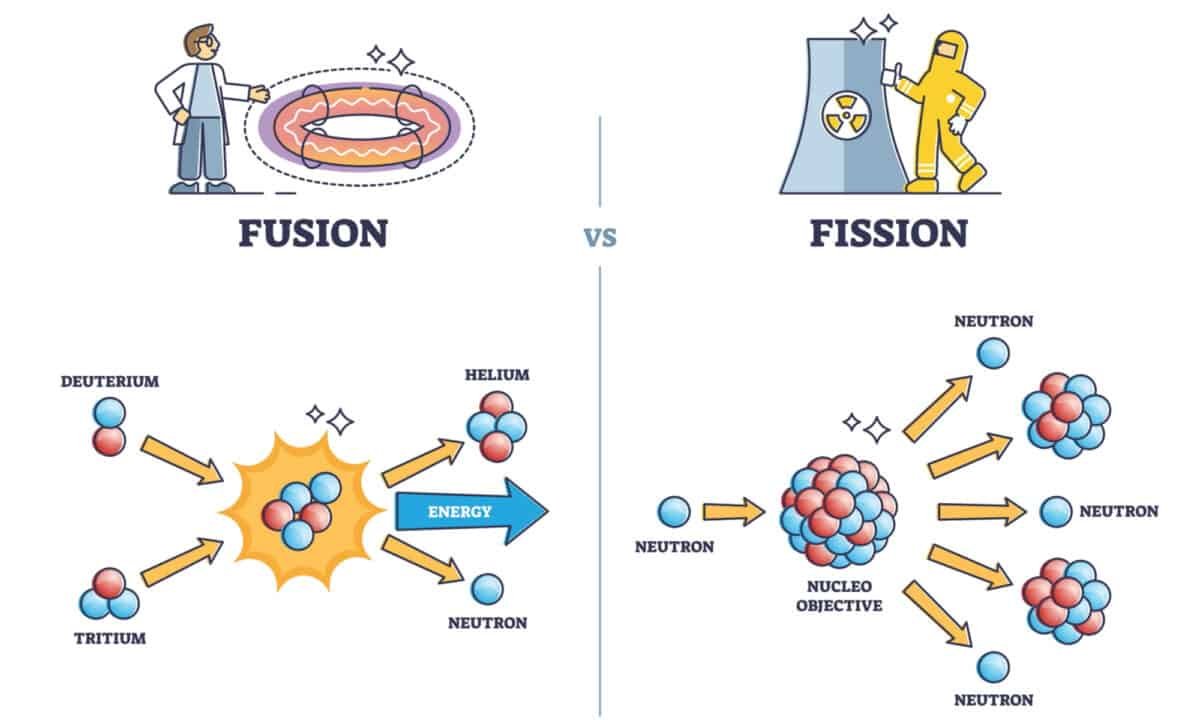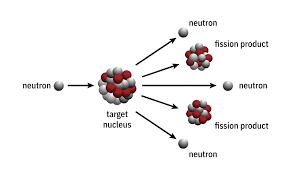Nuclear fusion and nuclear fission are two different processes involved in energy production, with significant differences in their mechanism and results.
OR nuclear fusion is the process in which two light nuclei combine to form a heavier nucleus, releasing a large amount of energy. This process is responsible for the production of energy in the sun and other stars, where conditions of temperature and pressure are extremely high (Syntelis & Syntelis, n.d.)In nuclear fusion, nuclei must overcome the electrostatic repulsion caused by positively charged protons, which requires high temperatures, typically in the millions of degrees Celsius. (Blanas et al., 2022)Controlled nuclear fusion is considered a promising energy source, as its byproducts are less polluting compared to conventional energy sources. (Zissis, n.d.).
On the contrary, the nuclear fission is the process in which a heavier nucleus splits into two or more lighter nuclei, accompanied by the release of energy and neutrons. This process is widely used in nuclear reactors to produce electricity (Koutitsas, 2020)Fission can occur spontaneously or be caused by the impact of neutrons on heavier nuclei, such as uranium-235 or plutonium-239. (Kortsalioudakis, nd)The energy released by fission is also significant, but its byproducts, such as radioactive waste, are more dangerous and require careful management. (Papamihail & Papamihail, n.d.).
In summary, the main differences between nuclear fusion and fission include the type of nuclei involved, the conditions required to perform the process, and the environmental effects of their byproducts. Fusion requires high temperatures and pressure, while fission can occur under milder conditions. Furthermore, fusion produces less radioactive waste compared to fission, making it more attractive from an environmental perspective. (Blanas et al., 2022).
More study here:
Koutitsas, K. (2020). Applications of machine learning in nuclear fusion.. https://doi.org/10.26240/heal.ntua.20182
Papamihail, A. and Papamihail, A. Effect of iron ion irradiation on the structural and magnetic properties of iron films. https://doi.org/10.12681/eadd/37750
Syntelis, P. and Syntelis, P. Emergence of magnetic flux on the sun, solar jets and coronal mass ejections. https://doi.org/10.12681/eadd/37970
Zisis, A. Scattering phenomena in media with anisotropy and inhomogeneity with applications in controlled thermonuclear fusion.. https://doi.org/10.12681/eadd/48300
Kortsalioudakis, N. Interaction of laser radiation with matter with emphasis on the examination of physical mechanisms that occur during the propagation of short-duration, high-intensity laser pulses in gases and solids. https://doi.org/10.12681/eadd/17068
Blanas, S., Papadogiannis, E., & Potamias, H. (2022). New forms of energy: towards nuclear fusion. Open Schools Journal for Open Science, 5(3). https://doi.org/10.12681/osj.32317



